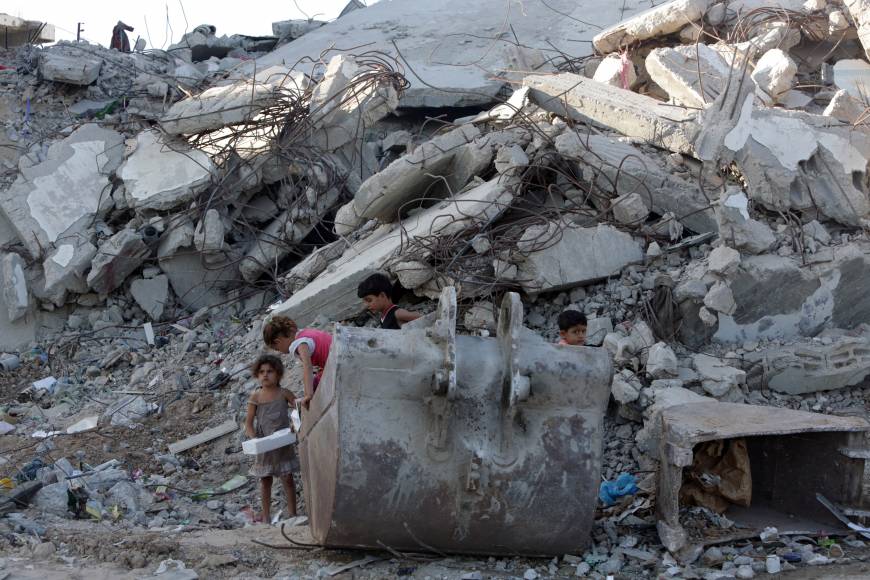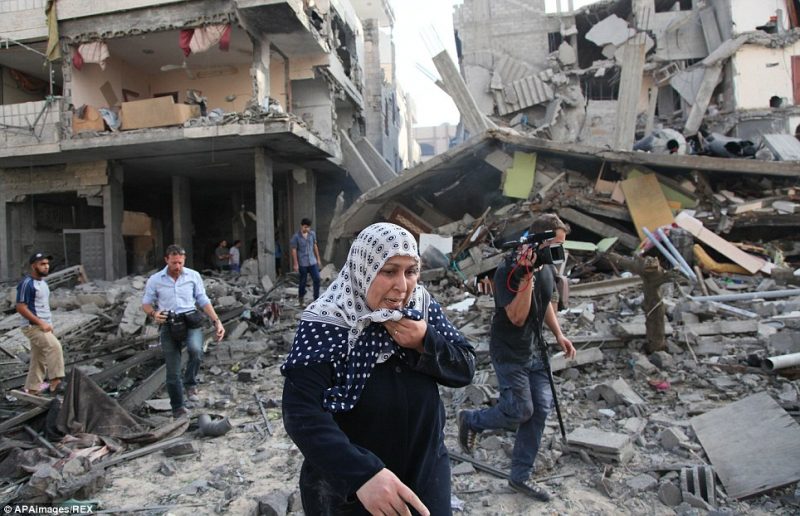
“Haaretz” – The Civil Administration gave the families living in the Palestinian hamlet of Khirbet Humsa in the northern Jordan Valley just 10 minutes to remove their possessions from the tents last Tuesday. Fatma Awawda, 23, held her 1-year-old daughter Larin.
She was paralyzed by the sight of the military jeeps and administration workers in fluorescent vests who got out of them, by the bulldozers, by the soldiers, by all the shouting.
But she pulled herself together quickly so she could empty as much as possible from the tent that was her home. What to take first? The gas canister? The cradle? Clothing and blankets? The mattresses? The stove? The plastic toys that arrived in a “CARE” package? The onions and potatoes? The rice?
She put Larin down in the back seat of the family’s beat-up Subaru. She’ll be warm and safe there, and I’ll have my hands free, she figured.
Larin wasn’t the only one to be put in the car for shelter: Four newborn lambs, too young still to be sent to the hills with the older sheep, were placed in the trunk.
After a while, one of the Civil Administration workers took the bundled baby girl out of the car and handed her to one of the adults. The keys were in the car. A soldier got in and started driving. The lambs were still in the trunk.
“The men started running after the car, shouting at the soldier to stop,” Awawda said on Friday, three days after the demolition order was carried out, leaving 11 families – 74 people, including 41 children – homeless. The lambs were rescued. The car was confiscated.
Another toddler, two years old, wet her pants while watching the bulldozer strike the makeshift structures that were her home. The children’s wails were drowned out by the noise of the demolition. Two and a half-year-old Mohammed shouted at a soldier, “Go away, go away!”
His mother, Ansar Abu al-Kabash, said her cousin was born just the day before. “She doesn’t have a name yet. During the demolition I sat my sister-in-law down on the side, with the baby in her arms. They’ve gone somewhere else now. They couldn’t stay here in the tent they gave us in the middle of all the junk.”
On Friday, her 4-year-old son Ismail had yet to calm down and kept crying. Mohammed was still fuming. Their 3-month-old sister Hadil, laying in a small crib in the emergency tent the family received, seemed to pick up on their unhappiness and added her own angry cries.
In terms of the number of people made homeless, this is the largest demolition operation carried out by the Civil Administration since 2010.
In terms of the number of structures that were torn down, it is the most extensive demolition operation since 2016, knocking down 11 tents and huts used as living quarters, 29 tents and shelters for sheep (about 1,000 animals), plus 10 sheep pens, three sheds, nine tents used as kitchens, 10 portable toilets, two solar panels, 23 water tanks, plus stalls and feeding troughs for the sheep.
Precious water was spilled. Sacks of animal feed were ruined. Two tractors and Awawda’s Subaru were confiscated. The statement from the Coordinator of Government Activity in the Territories about “an enforcement action against seven tents and eight animal pens” bore no resemblance to the actual scale of destruction.
Some of the Humsa residents say the convoy of military jeeps appeared at 10 in the morning. Others think it was at 11. Some remember seeing six bulldozers and diggers, others think there were four. Some say the demolition force made its first stop at the second of four tent encampments that made up this community of shepherds.
The encampments are spread out from west to east, with about two kilometers separating them. Others say the force came to the third encampment and then split up.
But all remember that the first thing the men of the community did was to run to all the corrals and get the sheep out to the surrounding hills. “The problem is that it’s the lambing season,” Abu al-Kabash said. “What will happen to the lambs? Where will we keep them? How will we take care of them?”
Some of the sheep gave birth afterwards in the hills. Finding shelter for the sheep and newborn lambs was the most urgent task, because the families’ livelihood depends on the sheep. It’s their way of life, one they will not give up.

The search for grazing areas is what brought the Awawda and Abu al-Kabash families, originally from the village of Samu’a in the southern Hebron Hills, to the northern Jordan Valley. The northern migration began in the 1970s and 1980s, when the grazing lands near Samu’a and Yatta began to shrink and access became more difficult due to military bans and Israeli construction.
In 1948, the families from Samu’a already lost a large chunk of their land that was left on the Israeli side of the Green Line. Due to population growth, the limited water supply Israel permits to the Palestinians, increasing drought and expanding settlements, more sheep breeders from Samu’a moved north to the Jenin and Tubas area.
The Abu al-Kabash and Awawda families lease land owned by people from Tamun and Tubas. On this land they erected their simple dwellings, and there they also grow wheat and barley for their own needs.
But Israel declared the area a “firing zone” and that is COGAT’s explanation for the massive demolition, as it has been for many of the recent demolitions and restrictions imposed by Israel on Palestinian construction and movement in the West Bank.
Firing Zone 903 alone, where Humsa is, took 80,000 dunams (about 20,000 acres) of land from Palestinians in the northern West Bank. Since 2018, the residents of Humsa have had to evacuate at least 20 times due to military exercises in the area.
“Israel didn’t leave us any land to plant. Without our sheep, we’ll become beggars,” says Yusef Abu Awad. “Israel does not want us to have our own source of income. It wants us to work for the Israelis.”
The demolition of each encampment lasted about half an hour. Sixty-year-old Aisha Abu al-Kabash, Ansar’s mother-in-law, who has difficulty walking, says the Civil Administration workers removed some of the contents of her tents in the second encampment.
Whatever they didn’t remove was demolished or buried under the tents’ remains. Umm Walid al-Kabash, from the third encampment, says through tears: “If only they had informed us ahead of time. We would have been able to save more things. The taboun for baking bread was also destroyed.”
Relatives of the Humsa residents who live not far away tried to drive over and see what was going on as soon as they heard, but were stopped by soldiers. Their children crossed the hills on foot to get closer to the scene. Photographers were also stopped by soldiers, so there is no footage of the demolition itself.
Only the mute testimony of the tumble of debris: mounds of rods and creased canvas, sheets of plywood, netting, simple furnishings, fabrics, playpens (since Tuesday these were put inside the emergency tents that were donated to the community), kernels of corn (food for the sheep) scattered on the ground.
The families hastened to wrap their food and some of their belongings in thick sheets of plastic to protect them from the rain that began falling that night.
After scenes of the extensive demolition were publicized, on Friday a large EU delegation came to view the site. The foreign ministries of Belgium, Britain, Ireland and Luxembourg issued condemnations and said the demolition was in violation of international law.
But Ansar said: “What’s new here? They don’t know what Israel is? They don’t know that Israel wants to get rid of us and bring more settlers here instead?”
***
By Amira Hass
Published by ICH
Republished by The 21st Century
The views expressed in this article are solely those of the author and do not necessarily reflect the opinions of 21cir.
